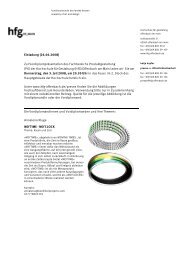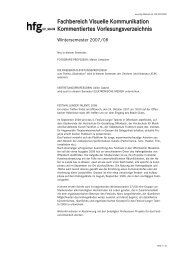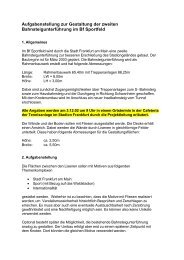User Manual
User Manual
User Manual
You also want an ePaper? Increase the reach of your titles
YUMPU automatically turns print PDFs into web optimized ePapers that Google loves.
Centre Weighted<br />
(23 x 20 mm) ≈ 25%<br />
CentreSpot<br />
(23 x 20 mm) ≈ 25%<br />
Spot<br />
(diameter 7.5mm) ≈ 2.5%<br />
Light metering and exposure control<br />
Two primary factors have to be considered when making exposure control choice, namely, metering<br />
method and exposure method:<br />
Metering method determines in which manner the light measurement is made and how much<br />
of the image is taken into account( Centre Weighted, CentreSpot and Spot).<br />
Exposure method involves the parameters and deciding factors about how the light measurement<br />
is translated into aperture and shutter speeds. Here the choice is about the camera controls<br />
and their effect on the result or suitability for the subject. Included in this choice is the type of automation<br />
too (<strong>Manual</strong> for 100% user control, Aperture priority, Program, etc for automated control).<br />
Some methods and modes are much more suited to various situations and applications than others,<br />
while some depend to a greater degree on personal preference and ways of working. A discussion<br />
of the points to consider in this context is beyond the scope of this manual. If you are not sure<br />
about choice, please check in other general photographic literature for a fuller explanation. Also<br />
check our website occasionally – www.hasselblad.com – for articles and discussions concerning<br />
such matters.<br />
Remember that all exposure configurations are only applicable to the ISO setting in use!<br />
Since the light measuring system is TTL, filter factors, lens extension / extension ring factors, etc, are<br />
automatically taken into account for average purposes. However, some combinations of methods<br />
and equipment can cause slight discrepancies for various reasons and therefore for critical work<br />
you should make alternative captures to suit personal preference.<br />
Exposures are displayed on the grip display to within 1, 1/2 and 1/3 EV tolerances<br />
(dependent on setting). This means that ‘half-stops’ are shown in a form that can<br />
differ from more traditional displays. For example, the position between f/ 8 and f/11<br />
is displayed as f9.5 and likewise the position between 1/30s and 1/60s is displayed<br />
as 45. Therefore a display showing ‘f 9.5 45’ simply means ‘f/9.5 at 1/45 second’. The<br />
appearance of an ‘s’ after the shutter speed signifies whole seconds so, for example,<br />
‘32s’ on the display signifies an exposure time of 32 seconds, not 1/30.<br />
Metering method<br />
There are three metering methods available. All three are reflective methods (measuring the light<br />
reflected off various selected parts of the subject according to method) and are through the lens<br />
(TTL). These have the following designations (with their respective display symbols):<br />
— Centre Weighted<br />
— CentreSpot<br />
— Spot<br />
Centre Weighted: Commonly used for ‘average’ light situations where there is no particular<br />
dominance of light or dark areas across the tonal range. Takes into account approximately 25% of<br />
the image seen in the viewfinder.<br />
CentreSpot: Emphasises the central section of the focusing screen equivalent to approximately<br />
25% of the image. This provides a balanced assessment and is a typical choice where the main<br />
subject is in the centre of the image.<br />
Spot: The sensitive area is equivalent to approximately 2.5% of the image area (the central spot<br />
on the viewfinder screen). Any parts of the image outside of this area will not affect the exposure<br />
reading. This provides a very accurate measurement of specific tones.Typically used in the zone<br />
system and similar light measuring situations where maximum control is required. Also excellent<br />
for tonal comparison measurements. The spot mode can display ‘zones’ instead of EVs in the viewfinder<br />
display (see Camera Options).<br />
80



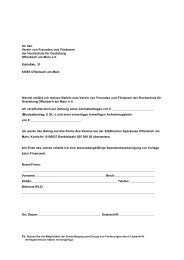
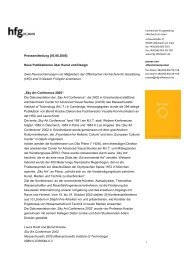

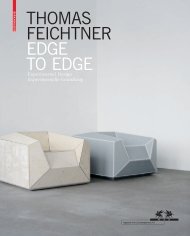
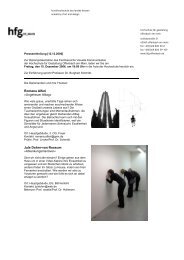

![Einladung [07.02.2006] - Hochschule für Gestaltung Offenbach am ...](https://img.yumpu.com/13375413/1/184x260/einladung-07022006-hochschule-fur-gestaltung-offenbach-am-.jpg?quality=85)

